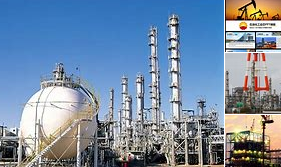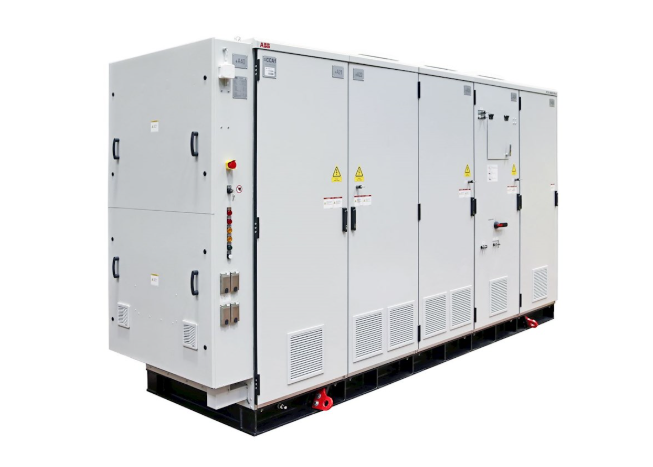Understanding natural gas
In addition to chemical production, natural gas is also used in the production of glass, steel and ceramics.
Home. Finally, natural gas has many household uses, making it an essential part of our daily lives. Due to their efficiency and ease of use, natural gas stoves are common in many homes. Natural gas dryers are also popular because of their short drying times.
Natural gas fireplaces bring warmth and a homey atmosphere on cold winter nights, while outdoor barbecue stoves that use natural gas provide great convenience when cooking outdoors.

4. How is natural gas processed, stored and transported?
The following are the ways in which natural gas is processed, stored and transported:
Processing of natural gas. Once extracted from the ground, natural gas must go through several processing steps to remove impurities and separate it into its different components. The first step in this process is usually dehydration, which removes all water vapor that may be present in the gas.
Next, it passes through a series of filters to remove impurities such as sulfides, carbon dioxide and other pollutants from the gas. If left untreated, these impurities can cause corrosion or damage to pipes.
After purification, the gas is usually compressed to increase transport pressure, which makes it easier to transport large volumes of gas for export by pipeline or ship.
Liquefied natural gas. Liquefied natural gas (LNG) converts natural gas from a gas to a liquid by cooling it to about -260°F(-162°C), a process that allows gas to be transported and stored in a more compact and efficient form. The liquefaction process has the following steps:
Pre-treatment: The natural gas is first cleaned to remove any impurities, such as acid gases, water, and heavy hydrocarbons, that may freeze or cause other problems during liquefaction.
Compression: Pretreated natural gas is compressed to increase the pressure, thereby increasing the temperature of the gas.
Cooling: The compressed natural gas is then cooled using a heat exchanger that uses a refrigerant such as propane or ethylene to lower the gas temperature to around -120°F(-84°C).
Liquefaction: Once the temperature drops low enough, the natural gas condenses into a liquid state and is stored in insulated tanks for easy transportation.
Loading and transportation: LNG can be transported on dedicated ships or trucks to its final destination, where it can be regasified into a gas, transported through pipelines or used as a fuel for power generation.
Converting natural gas to LNG requires specialized equipment and infrastructure, but LNG offers significant advantages in terms of storage and transportation efficiency compared to traditional gaseous transportation methods.
Storage of natural gas. There are three main methods of storing natural gas: underground storage or surface storage tanks. Underground storage facilities, often used to store large amounts of natural gas for later use during periods of peak demand, often include abandoned oil or gas fields, salt caverns, or aquifers that have been converted into gas storage.
Surface storage tanks, often used for smaller-scale storage needs, can be found in industrial sites or residential properties used for natural gas heating or cooking.
Floating gas storage, another form of surface storage, involves the storage of liquefied natural gas in large floating tanks, which are often referred to as floating storage and regasification units (FSRUs). Floating storage and regasification units, which can be moored at sea or in ports, allow them to receive LNG from ships and store it until it is used when needed. This type of storage is gaining popularity due to its flexibility and relatively low cost compared to other forms of LNG storage. In addition, floating storage and regasification units can be used for regasification, which is the conversion of liquefied natural gas back to a gaseous state for delivery by pipeline or other means of transportation.
Transportation of natural gas. Natural gas can be transported by pipeline, truck, ship, or rail vehicle, depending on the distance and volume to be transported.
Pipelines are the most common way to move large quantities of natural gas over long distances, spanning thousands of miles across countries and even continents.
Trucks and rail vehicles, often used for shorter distances or when they cannot be transported by pipeline, these vehicles usually transport compressed natural gas or liquefied natural gas in specially designed containers.
Ships are another way to transport LNG across oceans to international markets. LNG carriers use insulated tanks that keep the liquid at extremely low temperatures in order to maintain the condition of the liquid during transit.
To summarize the above, the storage and transportation of natural gas requires specialized equipment and infrastructure to ensure the safe delivery of natural gas from extraction sites to end users around the world. As demand for this valuable energy resource continues to grow, technological advances will continue to improve the efficiency and safety of all aspects of natural gas production, storage and transportation.
- EMERSON
- Honeywell
- CTI
- Rolls-Royce
- General Electric
- Woodward
- Yaskawa
- xYCOM
- Motorola
- Siemens
- Rockwell
- ABB
- B&R
- HIMA
- Construction site
- electricity
- Automobile market
- PLC
- DCS
- Motor drivers
- VSD
- Implications
- cement
- CO2
- CEM
- methane
- Artificial intelligence
- Titanic
- Solar energy
- Hydrogen fuel cell
- Hydrogen and fuel cells
- Hydrogen and oxygen fuel cells
- tyre
- Chemical fiber
- dynamo
- corpuscle
- Pulp and paper
- printing
- fossil
- FANUC
- Food and beverage
- Life science
- Sewage treatment
- Personal care
- electricity
- boats
- infrastructure
- Automobile industry
- metallurgy
- Nuclear power generation
- Geothermal power generation
- Water and wastewater
- Infrastructure construction
- Mine hazard
- steel
- papermaking
- Natural gas industry
- Infrastructure construction
- Power and energy
- Rubber and plastic
- Renewable energy
- pharmacy
- mining
- Plastic industry
- Schneider
- Kongsberg
- NI
- Wind energy
- International petroleum
- International new energy network
- gas
- WATLOW
- ProSoft
- SEW
- wind
- ADVANCED
- Reliance
- YOKOGAWA
- TRICONEX
- FOXBORO
- METSO
- MAN
- Advantest
- ADVANCED
- ALSTOM
- Control Wave
- AB
- AMAT
- STUDER
- KONGSBERG
- MOTOROLA
- DANAHER MOTION
- Bently
- Galil
- EATON
- MOLEX
- Triconex
- DEIF
- B&W
- ZYGO
- Aerotech
- DANFOSS
- KOLLMORGEN
- Beijer
- Endress+Hauser
- MOOG
- KB
- Moxa
- Rexroth
- YAMAHA
- Johnson
- Westinghouse
- WAGO
- TOSHIBA


Email:wang@kongjiangauto.com





























































































































